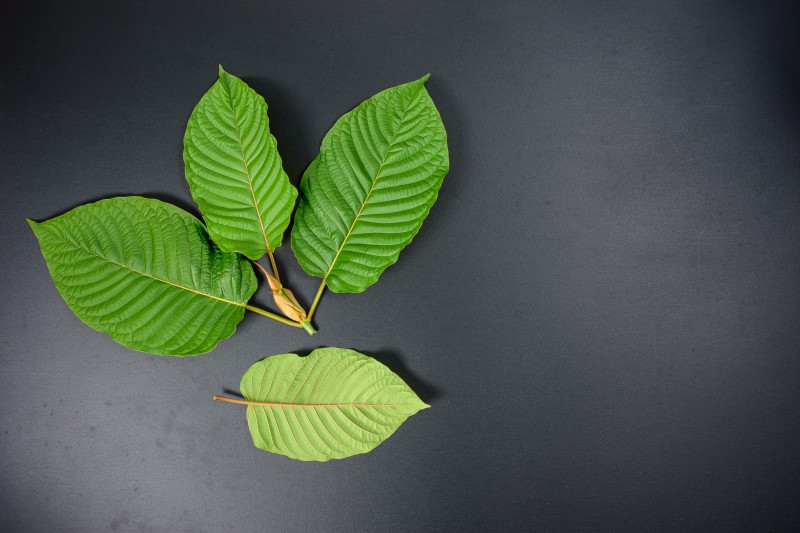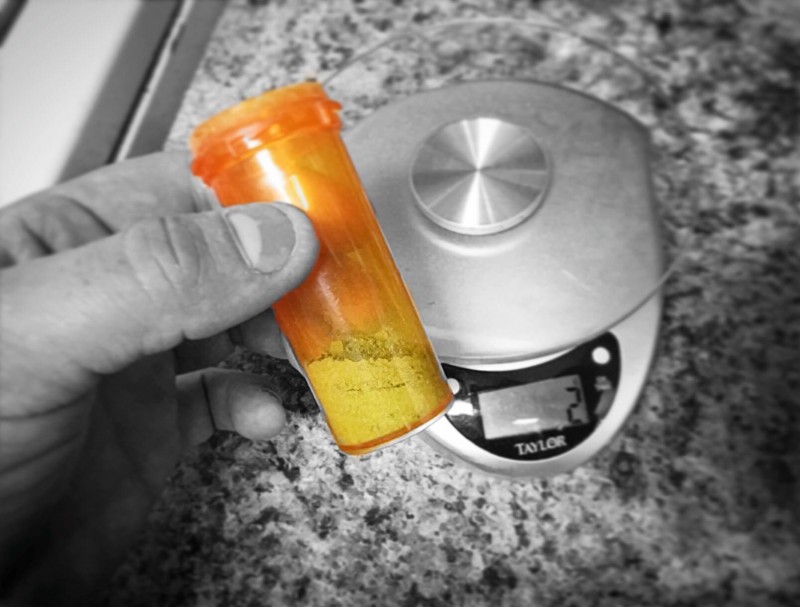
Disclaimer from the author: This article is for educational purposes only, and does not constitute medical advice; the content is not intended to be a substitute for professional medical advice, diagnosis, or treatment. Always seek the advice of a physician or other qualified health provider with any questions you may have regarding a medical condition, and be mindful of the legality of all substances that you may choose to include in your supplement regimen. Also, just in general, please don’t do anything stupid.
Before this year, I had not even heard of Kratom or had any idea what it was. I came across a post by Chris Bell (filmmaker, creator of Bigger, Faster, Stronger, and brother of Super Training’s Mark Bell), about how he was using Kratom to help him overcome his opiate addiction. I read a little bit about it but didn’t go much more in-depth until listening to an interview with Chris Bell on the Joe Rogan Podcast where he discussed Kratom and his upcoming documentary on the substance. About the same time, I had one of my close friends who deals with anxiety and depression (something I experience and have written an article series about in the past) tell me that Kratom was helping them dramatically with their symptoms. I decided to do some more research on the substance and consider trying it myself.
As you’ll quickly see if you do a Google search for Kratom, there’s a lot of mixed information out there, ranging from “Kratom addiction and rehab” to “Kratom saved my life.” It’s because of this that, after researching the substance and using it myself, I decided to write an article on the topic. I wanted to put together some legitimate research and some of my thoughts, to provide a good base of information so you can weigh the pros and cons of Kratom and evaluate it for your situation (a process I hope you use for everything regarding your training and your health).
So, other than sounding like the planet Superman came from, what is Kratom?
Kratom (known botanically as Mitrangyna speciosa), is a plant indigenous to Thailand and Southeast Asia. Kratom is a part of the same family of tree-like plants (Rubiaceae family) as coffee.1 It contains a number of alkaloids which possess dose-dependent pharmacological effects, with stimulant effects in lower doses and opiate-like effects in higher doses.2 While Kratom has been used in regions around Southeast Asia for hundreds of years1, until recently the only research done had been on rats (the first human study was published in 2015). With the recent rise of popularity of Kratom in the US and the DEA’s investigation of Kratom for potential scheduling (more on that shortly), more research on the pharmacokinetic effects on humans has been taking place.
History of Use
Historically, Kratom has been used in Thailand by field workers (in low to moderate doses) to fight off fatigue. It has also been used in moderate to high doses for pain management, diarrhea, and opioid withdrawal symptoms.1
These purported effects on opioid withdrawal, in particular, have led pharmacological researchers such as Christopher McCurdy to begin examining the effects of Kratom in their labs.3 Opioid pain medication (prescription pain pills such as Oxycontin) is effective for treatment of chronic pain, but long-term administration is associated with the development of opioid misuse, abuse, and dependence.6
The opioid epidemic in the United States has grown substantially over recent years, with an estimated 2.1 million people suffering from substance use disorders related to prescription pain medication, and an estimated 467,000 addicted to heroin.4 With these issues of abuse, and the deaths associated (overdose deaths involving prescription opioids have quadrupled since 19995), finding solutions and help for these victims is a top priority for many researchers.
Research has begun to show Kratom is very effective at treating opioid withdrawal, but the outcomes of long-term administration are unknown6 (we will go more into this later).
Because of its psychoactive effects, (and abuse when combined with other substances such as cough syrup), Kratom is illegal in Thailand, Australia, Myanmar, and Malaysia.7 Some have speculated this began in certain regions because of the conflict with the opium drug trade.8
Despite its long history in Southeast Asia, Kratom has only recently begun to be used as an herbal remedy in the west. The majority of research in the US regarding Kratom (over 75%) has been done in the past 10 years1, and web searches and online retailers of the product in the US have grown substantially.
Legality in the United States
Currently, from a federal standpoint (as of the date this article was written), Kratom is regulated as an herbal product. And while it is not prohibited by the Controlled Substances Act (CSA), the DEA determined in 2010 that it could not be legally advertised as a remedy for any medical condition. From that point forward it was categorized as a “chemical of concern” without any legitimate medical use.1 It remained legal, however, and was not scheduled under the CSA.
On August 30, 2016, the DEA made the unexpected move of announcing their intent to schedule Kratom under the Schedule-I drug classification (which indicates high potential for abuse and no known medical benefit) along with substances like heroin. Their explanation described 15 Kratom-related deaths from 2014 to 2016 but did not describe the details of those deaths or other substances involved.9 To provide context for comparison, 113 people die annually from over-the-counter acetaminophen products (Tylenol).10
Some Kratom vendors filed a lawsuit against the DEA, seeking an emergency injunction to prevent the scheduling of Kratom. Because of public backlash, the DEA opened a public forum for Kratom users to share their experiences, and began their further research on the drug's risks and benefits.11
The American Kratom Association also petitioned the DEA to withdraw its proposal, and an outside research group was then contracted to review the available research on Kratom and develop an 8-factor analysis (the legal framework used to determine whether a substance falls under scheduling) to submit to the DEA for consideration (the full report can be read at the end of this article).12
One of the analysis’ authors, Dr. Jack Henningfield, commented on their conclusions regarding the report:
“It's important to understand that although Kratom has some mild effects similar to opioids, its chemical make-up is different, and it appears overall much safer, with apparently relatively small effects on respiration. In fact, Kratom's analgesic effects and impact on energy, combined with its favorable safety profile supports continued access by consumers to appropriately regulated Kratom products while research on its uses continues."
Furthermore, he said, "Surveys suggest that Kratom products are used by many former opioid users as a natural remedy to help them abstain from opioids."12
Currently, Kratom remains unscheduled and legal federally for use, while more research is being done on the substance. Important to note, however, is that individual states do have laws prohibiting Kratom (a list is provided at the end of this article).
Summary of Drug Benefits
Kratom’s alkaloids have been shown in research to produce opioid-like nervous system effects on animals, and more recently in humans. Because of the low amount of human research done, much of the benefits examined in humans are subjective effects described via research surveys.
The effects of Kratom vary on the individual and are dose-dependent, but low to moderate doses (one to five grams of raw leaves) produce a mild stimulant effect that many note as more pleasant than those of amphetamine-like drugs.1 Many people have reported that the opioid-like effects of pain reduction, stimulation, and euphoria help them with their anxiety and depressive related symptoms (although this has yet to be studied extensively). Moderate-high doses (five to 15 grams) have also been shown to produce euphoric and pain-relieving sedative effects that allow some to replace opioids to manage pain.
Regarding safety, reports of toxic effects are rare and usually involve the use of relatively high doses of Kratom (more than 15 grams).1
Summary of Drug Risks
The greatest risk when it relates to Kratom currently is the lack of a large body of human research done on long-term effects. Hopefully, this will change in the future, and the benefits and risks will continue to be better substantiated.
As mentioned earlier, the drug's effects vary by individual, and some of the stimulant effects may manifest themselves in some individuals as anxiety and irritability. The opioid-like effects include nausea and constipation. There have also been reports of chronic users suffering from conditions such as tremors, weight loss, and addiction. The research does note, however, “In each of these case reports, the patients may have had confounding health conditions, may have been using other drugs along with Kratom, or both. One of the major problems in evaluating the potential uses and safety of an herbal agent such as Kratom is the lack of understanding of how substances in Kratom may interact with prescription medications, drugs of abuse, or even other herbal supplements.”1
The other primary risk relating to Kratom is lack of regulatory processes and standardization related to the production and sale of the substance. Altered alkaloid extracts, “watered down” products, and mislabeling are all concerns that those choosing to purchase Kratom have to work around (and could lead to serious illness). There are pros and cons to the federal regulation of various substances (especially depending on how well you trust the government, which is a topic for another time), but this lack of standardization, in my opinion, is one of the few cons.
Practical Use for the Lifter
Hopefully, this background on the history, legality, and research surrounding Kratom is helpful as you evaluate it and its potential uses. I think it’s important for every individual to carefully take into consideration all the pros and cons of various drugs and supplements before choosing to utilize them. This article is not the end-all-be-all on Kratom, and I highly recommend that you do research of your own regarding this and all substances.
For myself, I decided to give Kratom a try at its low dose (two grams) for its stimulative and potential anxiety-relieving effects. There are various strains of Kratom that are purported to produce different effects based on the alkaloids contained, and I chose a stimulative strain named Maeng Da (warning: it tastes awful). I mixed it in with an energy drink that I typically drink before lifting (I never use pre-workout anymore) and was very surprised at how good I felt for several hours afterward. I felt focused, less anxious, and had more energy than I typically have during the day. I read in several places that you can develop a tolerance to Kratom (much like caffeine), so I’ve been using it for two days, with one day off in between. I have not personally had any negative effects (or any withdrawal effects on the days I don’t take it), and have continued to use it on a weekly basis for my hip pain (I have two torn labrums, bone spurs, a cam deformity, and a generally messed up hip joint) and my anxiety.
In my personal experience (again, I will re-iterate, personal), many of the medications I’ve been prescribed throughout the years by a doctor have had far more serious side effects than that of Kratom. That being said, I still do take medication for my OCD/anxiety, as it’s been very effective in helping me with my sleep and daily function. I never want articles like this to make people feel as though they can just stop taking their medication because they want to try an herbal remedy. Again, those are decisions you need to make with your doctor.
I believe Kratom can be a very useful drug for the lifting population, particularly because of the number of lifters who deal with chronic pain and mental health concerns. It’s been a game-changer for me so far.
As I’ve mentioned, make sure you evaluate your situation before choosing to try something like Kratom, but hopefully, this article provides you with a good starting point for your research and your decisions.
Helpful Resources
- State Laws Regarding Kratom: http://www.americankratom.org/legal_status
- 8-Factor Analysis of Kratom for DEA: http://speciosa.org/8-factor-analysis-of-kratom-performed-by-dr-hennigfield-submitted-the-deafda/
References
- Prozialeck, W. C., Jivan, J. K., & Andurkar, S. V. (2012, December 01). Pharmacology of Kratom: An Emerging Botanical Agent With Stimulant, Analgesic and Opioid-Like Effects. Retrieved March 06, 2017, from http://jaoa.org/article.aspx?articleid=2094342
- Trakulsrichai, S., Sathirakul, K., Auparakkitanon, S., Krongvorakul, J., Sueajai, J., Noumjad, N., . . . Wananukul, W. (2015, April 29). [Full text] Pharmacokinetics of mitragynine in man | DDDT. Retrieved March 06, 2017, from https://www.dovepress.com/pharmacokinetics-of-mitragynine-in-man-peer-reviewed-fulltext-article-DDDT
- February 24, 2017 By Jordan Thomas, & February 18, 2017 By Bill Dabney. (2014, September 23). New Hope for Addicts. Retrieved March 07, 2017, from http://news.olemiss.edu/new-hope-for-addicts/#.UkSzEeg9-cc
- Abuse, N. I. (2014, May 14). America's Addiction to Opioids: Heroin and Prescription Drug Abuse. Retrieved March 07, 2017, from https://www.drugabuse.gov/about-nida/legislative-activities/testimony-to-congress/2016/americas-addiction-to-opioids-heroin-prescription-drug-abuse
- Prescription Opioid Overdose Data. (2016, December 16). Retrieved March 07, 2017, from https://www.cdc.gov/drugoverdose/data/overdose.html
- Boyer, E. W., Babu, K. M., Adkins, J. E., McCurdy, C. R., & Halpern, J. H. (2008, June). Self-treatment of opioid withdrawal using kratom (Mitragynia speciosa korth). Retrieved March 07, 2017, from https://www.ncbi.nlm.nih.gov/pmc/articles/PMC3670991/
- Greenemeier, L. (2013, September 27). Should Kratom Use Be Legal? Retrieved March 07, 2017, from https://www.scientificamerican.com/article/should-kratom-be-legal/
- Why Kratom Was Banned In Thailand. (2014, February 21). Retrieved March 07, 2017, from http://entheology.com/news-articles/why-kratom-was-banned-in-thailand/
- DEA.gov / Headquarters News Releases, 08/30/16. (n.d.). Retrieved March 07, 2017, from https://www.dea.gov/divisions/hq/2016/hq083016.shtml
- Gerth, T. C. (2013, September 23). Behind the Numbers. Retrieved March 07, 2017, from https://www.propublica.org/article/tylenol-mcneil-fda-behind-the-numbers
- Silverman, L. (2016, October 12). Kratom Gets Reprieve From Drug Enforcement Administration. Retrieved March 07, 2017, from http://www.npr.org/sections/health-shots/2016/10/12/497697627/kratom-gets-reprieve-from-drug-enforcement-administration
- Posted by Angela Ross 231sc on January 18, 2017. (n.d.). 8-factor analysis. Retrieved March 07, 2017, from http://www.americankratom.org/8factor













Thanks again for the informative article.
He found Kratom and though he is meticulous in keeping the doseage regulated, it has been a God send. He takes it three times a day and is able to work and handle most stresses with out the bad side effects of the opiate drugs. I have taken low doses for back pain and knee pain with good results. No high or euphoria for me. I am glad that he has found this and orders in bulk from a reputable place online. He has tried all kinds of kratom and stresses buy quality.
This hopefully will be around a while for him.
With explanation about kratom that was helpful.
All I can say about kratom that saved my life from the monster
Who destroy my life and lose my money on it
In 2012 I was struggling with anxiety panic attack depression sadness
I want to my doctor and he describe me Ativan 1 mg and that medicine was helping me
A lot but once I using it for almost 6 months the Ativan 1 mg was not
Enough for me I want back to my doctor and ask him for stronger mg
And he did gave me 2 mg and told me use 3 pills a day only if I need it
On October 2015 I was using 7 to 8 pills a day until I get deeper and
Beside That I started using Vicodin also and 2016 I was using Ativan
10 pills a day and Vicodin 10 a day I was really high and all ways sleeping
Until I heard about kratom from that moment I stopped using Ativan
And Vicodin and star taking kratom now I am on good health
Working as a truck driver making great great money spending time with
A family and friends lives the life I lived before
And I name my self kratom
Thank you so much wish All the best for all of you guys god bless all of you
Kratom can stay legal in many states if we support the groups fighting for it. The DEA backed down from the proposed ban last year after a huge public outcry. This group probably does the most work for keeping kratom legal, so check them out. http://www.americankratom.org/
Mark